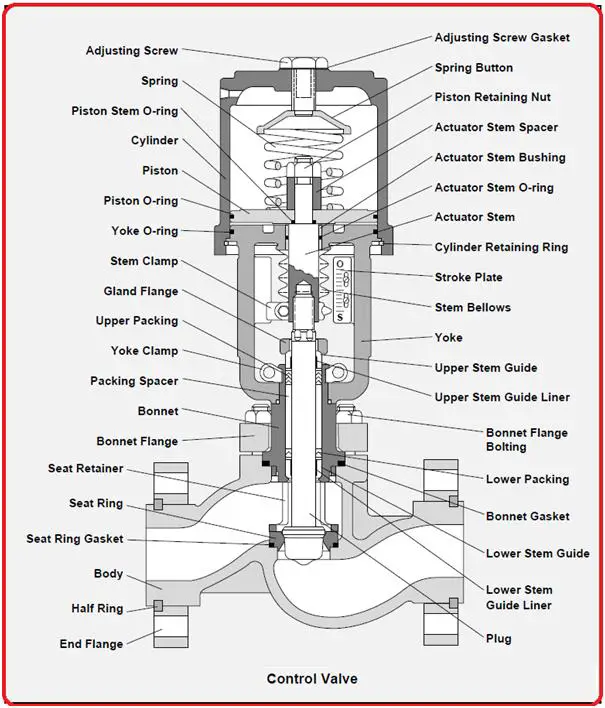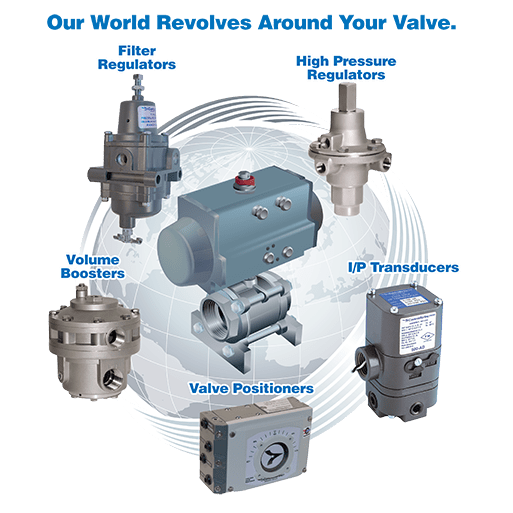How Control Valves Influence Energy Efficiency in Industrial Settings
How Control Valves Influence Energy Efficiency in Industrial Settings
Blog Article

Maximize Power Savings and Convenience With Advanced Structure Automation Controls
In the world of modern architecture and facility management, the assimilation of sophisticated building automation controls stands as a critical development. The merging of modern technology and sustainability has birthed a brand-new era where power performance, convenience optimization, and functional streamlining are no more remote ambitions however possible truths. By harnessing the power of automation, structures can adapt, react, and develop in methods that were when unthinkable. The capacity for substantial power financial savings and boosted convenience is not just an opportunity however a promise waiting to be fulfilled. This paradigm change in structure monitoring holds the essential to opening a globe where environmental conscientiousness and occupant wellness sympathetically exist together within the walls of our structures.
Energy Effectiveness Conveniences
Energy performance advantages can considerably minimize energy consumption and operational expenses in structures. By executing energy-efficient practices and innovations, structure proprietors and drivers can achieve significant cost savings while additionally adding to ecological sustainability. One of the main benefits of boosting energy effectiveness in structures is the reduction of utility expenses. Energy-efficient systems, such as innovative structure automation controls, can enhance the use of resources like air conditioning, illumination, and home heating, leading to lower power expenditures over time.
Additionally, enhanced power effectiveness can prolong the life expectancy of building devices and systems. By running a lot more effectively, HVAC systems, light, and various other building components experience much less deterioration, leading to reduced upkeep and substitute prices. In addition, energy-efficient buildings frequently regulate greater building worths and rental prices, supplying long-term economic advantages to owners.
Moreover, energy performance can enhance occupant convenience and productivity. Effectively controlled indoor atmospheres with ideal lights and thermal conditions develop an even more pleasant and favorable workspace, causing enhanced staff member contentment and performance. In general, the power efficiency advantages associated with sophisticated structure automation controls are multifaceted, incorporating expense financial savings, environmental stewardship, and passenger health.
Improved Comfort Control
Enhancing comfort control in structure settings requires an innovative integration of innovative automation systems for optimal resident wellness. By utilizing sophisticated structure automation controls, facilities can tailor the interior setting to meet the details requirements and choices of occupants. These systems allow exact law of lights, temperature level, and air flow, creating a comfortable and efficient environment. Passenger complete satisfaction and performance are closely linked to thermal convenience, making it crucial to have systems in place that can adjust to transforming problems in real-time.
Improved comfort control surpasses standard temperature adjustments. It consists of functions such as tailored setups, occupancy sensing units, and natural light application to develop a dynamic and receptive setting. By including these innovative controls, structures can not just improve convenience however also boost power performance by enhancing system operations based upon actual tenancy and use patterns. Eventually, prioritizing resident comfort with advanced automation systems causes an extra pleasurable and healthier interior environment.
Functional Performance Improvements

In addition, the application of real-time monitoring and analytics devices allows building operators to blog determine power ineffectiveness and functional abnormalities quickly. By continuously monitoring energy use patterns and system performance metrics, modifications can be made in real-time to maximize power consumption and guarantee peak functional efficiency. control valves. Additionally, integrating need reaction strategies right into structure automation controls can further improve operational performance by dynamically changing power use based upon grid conditions and pricing signals
Indoor Environment Optimization
Efficient interior environment optimization is a fundamental aspect of building automation controls, making certain owners' comfort and wellness while making best use of power savings. By making use of innovative sensing units and controls, constructing automation systems can continually readjust and check temperature level, moisture degrees, air top quality, and ventilation to create an optimal interior atmosphere. Preserving comfy and constant conditions not only enhances passenger complete satisfaction however also boosts productivity and total well-being.
Indoor climate optimization additionally plays an essential role in power effectiveness. By fine-tuning heating, air flow, and air conditioning systems based on real-time data and tenancy patterns, developing automation controls can substantially decrease energy intake - control valves. Implementing strategies such as demand-controlled ventilation and thermal zoning can help decrease energy waste while making certain that each area of the building obtains the necessary conditioning.

Lasting Atmosphere Production
Structure automation manages not only enhance indoor climate problems for energy efficiency and owner comfort however additionally lay the foundation for developing a lasting environment through critical management of sources my latest blog post and systems. By integrating advanced structure automation modern technologies, such as sensors, actuators, and intelligent software application, facilities can change and keep an eye on energy usage in real-time to decrease waste and minimize their carbon footprint. These systems make it possible for anticipating maintenance, identifying possible problems before they rise and enhancing devices performance to improve durability and performance.
Additionally, sustainable setting development extends past energy monitoring to include water preservation, waste decrease, and indoor air top quality enhancement. Building automation controls can control water use, identify leakages, and make sure proper waste disposal techniques, contributing to total sustainability initiatives. Additionally, by monitoring and managing ventilation and filtration systems, these innovations enhance resident wellness and productivity while lowering energy intake related to cooling and heating operations.
Verdict
In conclusion, progressed building automation manages deal considerable advantages in terms of power cost savings, convenience control, operational effectiveness, indoor climate optimization, and producing a lasting environment. By carrying out these controls, buildings can achieve optimum efficiency while reducing energy consumption and improving passenger comfort. It appears that the usage of advanced automation innovation is critical in boosting building efficiency and developing a more sustainable future.
Energy effectiveness benefits can significantly reduce energy consumption and operational expenses in buildings. On the whole, try this the power performance advantages associated with innovative building automation controls are diverse, including expense savings, environmental stewardship, and passenger health.
In addition, integrating demand response strategies into structure automation controls can additionally improve operational performance by dynamically readjusting power usage based on grid conditions and rates signals.
Building automation controls not just enhance indoor climate problems for energy efficiency and owner comfort however also lay the structure for producing a sustainable setting through strategic administration of resources and systems.In verdict, advanced structure automation manages deal considerable benefits in terms of power cost savings, convenience control, functional effectiveness, indoor climate optimization, and creating a lasting environment.
Report this page